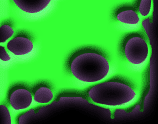|
Gay History
The first gay pride parade in 1969, known as the March on Stonewall, started as a protest against discrimination and
violence against gays in New York City. Today, pride events have become an annual ritual and have grown to include thousands
of gay and gay-friendly participants, not to mention hundreds of spectators.
Many gays and lesbians dress in bright colors, head-to-toe leather or sometimes next to nothing. But regardless
of the attire, all of the participants join the festivities to remind the world that gays deserve the same rights as others
and people should be free to live their own lifestyle, void of judgement or hate. Gay pride is also a symbol of solidarity
and an opportunity to express the vivid personalities which reflect the diverse gay communities throughout the world. During
this time (and in many places year round), the skies are covered with the gay pride flags and banners, the symbol of gay solidarity
and freedom.
Meaning and History of The Gay Pride or Rainbow Flag
The gay pride flag was designed by Gilbert Baker and debuted at the 1978 San Francisco Gay and Lesbian Freedom Day Parade.
Read more about the origin of the gay pride flag Also, Did you know that each color on the gay pride flag has a different
meaning?
|

